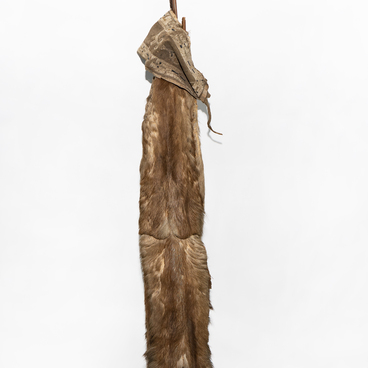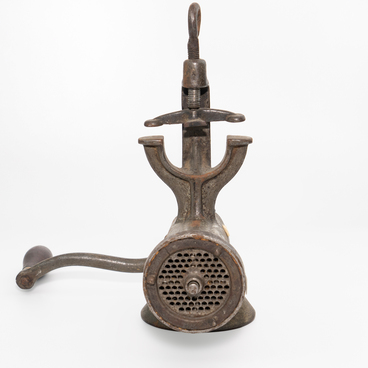The potato grinder from the museum’s collection is a homemade mechanism consisting of a wooden rectangular base, in the middle of which the craftsman placed a drum with a metal grater with homemade through holes. The steel drum is the main grinding element, which was set in motion by rotating the handle located on the side.
The peculiarities of the local climate — rains in August-September, floods — prevented the development of widespread farming. The same thing happened with hay harvesting. These circumstances radically changed the directions in the economy of the former peasants. Farmers mastered fishing. The only remaining agricultural work was gardening. People grew potatoes, cabbage, carrots, rutabagas, and beets for themselves. Potatoes were grown most of all, they were certainly harvested for the winter to feed a large peasant family, which could number up to 15 children.
Potatoes had a waste-free production: good ones were left for winter storage, small cracked or of low quality tubers were used for livestock feed and for processing into starch, which was necessary on the farm. After washing, the starch was dried in a clean, dry, cool room in the dark for several days, constantly stirring. It was stored in a wooden box or a linen handbag.
Starch was used to make kissel and molasses, to starch white garments, and to make glue. The potato grinder was necessary precisely when grinding potatoes into starch, the tubers were grated between the drum and the wooden block.
The specimen presented in the collection was brought from the village of Novoilinovskoye, Nizhnetambovsky district of the Khabarovsk District of the Far Eastern Territory (now Komsomolsk district of the Khabarovsk Territory) during the expedition collections of the Komsomolsk-on-Amur Museum of Local Lore in 1978.
The expedition consisted
of Lyudmila Aleksandrovna Tolkova and Svetlana Petrovna Kubasova, research
associates of the department “History of the construction of
Komsomolsk-on-Amur”. The imported item was dated back to 1930. A potato grinder
was available in the everyday life of almost every inhabitant of the Amur
region, this particular one was made by Dmitry Sevastyanovich Grigoryev, the
son of the first settler of the village of Novoilinovka.








